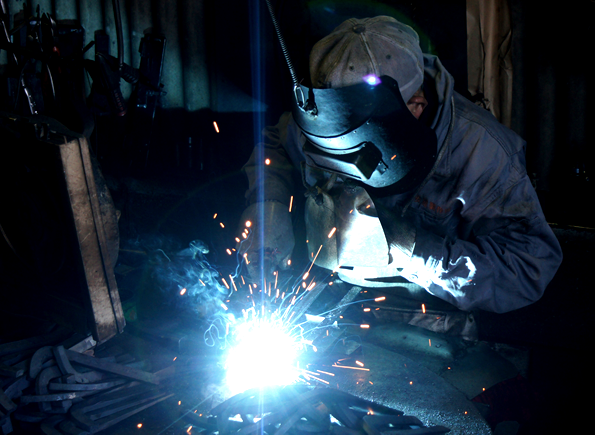Mass-Produced And Non-Mass-Produced Japanese Tools – What’s the Difference?

Jump to:
Japan has a long tradition of craftsmanship, and there is something fundamentally Japanese about spending many years learning a craft that will enable the creation of unique tailor-made tools. On the other hand, the economic reality is that without mass production it is difficult for tool manufacturers to be profitable and competitive, due to the significant requirement for manual labor and the lack of economies of scale.
In this blog post, we shall discuss the main differences between mass-produced and non-mass-produced tools and the advantages of each, considering the difference in the materials and production methods used. Following that, we will take a closer look at three different traditional Japanese manufacturers and the techniques that they employ, as well as discussing reasons why you might choose a non-mass-produced tool.
Characteristics Of Mass-Produced And Non-Mass-Produced Tools
When tools are mass-produced, after the initial cost of the production equipment, the cost of producing each item decreases due to economies of scale. Economies of scale can be defined as gaining a cost advantage through efficient production. To achieve this efficient production, the process will need to be automated. Automation decreases labor requirements per item and increases consistency between standardized items.
Whereas the production of mass-produced tools necessarily involves a one-size fits all approach, non-mass-produced tools can be customized to the requirements of the user. Additionally, what they may lack in precision, they gain in individuality, giving you the sense of a unique product not owned by anyone else in the world. Handmade tools may feature elaborate and ornate designs that cannot be reproduced by machines.
Materials Used For Japanese Tools

Mass-produced tools use a variety of plastic, metal, and composite materials. Metals may include steel, titanium, brass, magnesium, and aluminum. The plastics used, among others, may include acrylic, Teflon, PVC, PET, ABS, and PPS.
Handmade non-mass-produced tools are commonly carved out of wood (commonly used for handles) with blades forged out of various types of steel. In the case of carpentry, part of the skill is the knowledge of the relative strengths of each type of wood and knowing which one is best to be used in each situation.
Production Methods Used For Japanese Tools

When it comes to mass-produced tools, the vast majority of the investment in terms of both cost and labor comes in the preparation stage. After designing the product, it is necessary to prototype the equipment re quired to produce it. Common equipment used to mass-produce tools includes plastic injection molding tools, liquid silicone rubber injection molds, die-cast tools, welding fixtures, and assembly jigs. The point when the above equipment is deemed ready for the production environment is referred to in the industry as “opening the tool.” The point this is done requires careful consideration as doing it too late will delay the mass production process, whereas if this is done too early, you might need to modify them and redoing the process will double the cost. The right time to do this, therefore, is the point when you can be sure that nothing that is dependent on it will be changing, that is to say, that there is nothing that can directly or indirectly affect the part.
While the point up to opening the tool is the important part of the process of generating mass produced tools, the process of producing non-mass-produced tools involves meticulous manual labor from start to finish using skills that take centuries to develop and are passed down from generation to generation. For example, the process of forging the Tamahagane Steel used to make swords and knives involves manually adding ironsand and charcoal alternately to a Tatara tub every ten minutes or so over the course of several days. This is even before the swordsmith carries out the tasks of forging and coating the sword, quenching it to harden the steel, and fitting it with a handle.
In the next section, we shall introduce some traditional Japanese manufacturers, all of which are based in Miki City in Hyogo Prefecture, which is Japan’s oldest blacksmith town, and examine their techniques in more detail.
Traditional Japanese Manufacturers of Non-Mass-Produced Tools
Doukan

Doukan specialize in agricultural and gardening tools, such as serrated sickles for weeding and vegetable harvesting, hoes, and Kindashi marking knives, as well as hedge and pruning shears. When the company was founded, in 1966, it made scissors for cutting cloth, but soon became the first company in Miki City to produce gardening shears and has now extended its lineup to include the products described above. Their philosophy is one of not only preserving the traditions and techniques of Miki City, but also refining them, and connecting them to the future.
The manual process they employ is described below, using the example of garden shears.
Hot Forging
Steel is heated to a temperature of 800℃, lumps are removed from the heat at an exact timing based on the intuition of the craftsman, and a forging press is used to form the blade. This process requires both patience and tenacity.
Polishing
The tip of the blade is then polished using a whetstone and finished with a buffer. This is another process in which the craftsman uses their skill and experience to determine the sharpness of the blade.
Fine Sharpening
In addition to manual labor and craftmanship, the fine sharpening of the cutting edge of the blade is performed using a special grinder developed in-house.
Assembly
A hammer is then used to create the perfect gap between the blades. The cutting edges are individually checked and hammered to ensure perfect alignment and a smooth cutting action.
Product Check
Each and every product is strictly checked by the eye and sense of the craftsman for both sharpness and smoothness of movement.
Kanekoma

Kanekoma is famous for producing the Higonokami Japanese pocketknives, of which it is the sole producer in Japan.
The Higonokami is a type of simple folding Japanese knife that has been used in Japan since before the Pacific War. It is characterized by the fact that it is folded into an iron or brass sheath, and the sheath also serves as a grip.
It was invented in the middle of the Meiji period (1868-1912) based on a knife brought back from Kagoshima by Tasaburo Shigematsu, a businessman from Hyogo Prefecture, and the trademark was registered in 1910.
Higonokami knives were widely used in Japan at a time when replacement blade-type cutter knives were not available. The key point is that the blade can be extended with a single movement of the thumb by attaching a protrusion called a tail (chikiri) at the base of the blade, and it can be used in place of a petty knife or an engraving knife. In the past, Higonokami knives were really popular among elementary school boys, who used them for creative purposes such as sharpening pencils and making new toys by cutting branches.
In this day and age when more products are made by machine pressing, hand-forged Higonokami knives are special. Even though there are now many machines in the workshop, the process of making Higonokami knives has not changed much over the years.
First, a composite of Aogami (high-grade steel from Shimane Prefecture) and soft iron is cut and heated over a fire to forge it. A machine is then used to grind the cross section into a V-form, and the shape is formed by pushing out the steel center. Next comes the quenching. The blade is turned bright red by a burner at 800-850℃, then rapidly cooled by placing in oil. This process is repeated to improve the sharpness of the blade. The sheath, made of brass or iron, is stamped with the Higonokami mark and then bent in half. Currently, no other company besides Kanekoma can use the Higonokami trademark. Once the hardened blade is inserted into the finished sheath, the holes are connected, and the blade is hardened, following which it is time for finishing. The entire surface is repeatedly sharpened with different types of whetstones, and the condition of the caulking is inspected and adjusted before the knife is finally shipped.
Azui Manufacturing

Azui Manufacturing was founded by Yoshikazu Azui with his four sons in 1982, after years of performing contracted metalworking, focusing on the agricultural tool business. Their claim to fame is that they were asked to manufacture the hoe used by the Crown Prince at the 29th National Tree Planting Festival in 2005.
The craftsmen, based on years of experience, forge resilient and durable steel tools by hammering, with the intention that each tool will be used by the generations to come. They use a technique called Hizukuri (heat shaping) to adjust the thickness of each part in a well-balanced manner, setting the angle and warp to increase the comfort of use and prevent fatigue in the user. Their range of products includes hoes of various specifications, as well as requests for hand tools used in construction, civil engineering, fishing, and many other fields.
In this section, we have looked at three manufacturers from the blacksmith town of Miki City in Hyogo Prefecture. For more information about Miki and other blacksmith towns, we recommend you check out this article.
Why Should I Purchase a Non Mass Produced Tool?
As discussed previously, due to economies of scale mass-produced tools are cheaper than their non-mass-produced counterparts. So why would you choose a handmade tool? Well, because they have several advantages, as outlined below.
(1) Durability
Mass-produced tools are designed to be disposable and may use inferior materials. Tools created by artisans, on the contrary, are built to last and be passed down from generation to generation. While the mass-produced tool may be initially cheaper, the long-term costs may not be much different.
(2) Unique Character
Handmade tools have a unique character based on the person who made them, and for this reason can be considered more meaningful than tools mass-produced by machines.
(3) Cultural Contribution
One of the most important reasons for buying handmade tools is that without people willing to purchase tools and support the craftsmen, the knowledge and skills will disappear and become a lost art, which is damaging from a cultural perspective.
Mass-Produced Or Non-Mass-Produced – That Is The Question

In conclusion, when comes to deciding whether to opt for mass-produced or non-mass-produced tools, the choice ultimately depends on your budget and the importance that you place on the tool itself. If you are looking for a reasonably priced tool where the goal of using it is simply to get the task done, and for which the manufacturer can easily provide a replacement in case of any problems, then it makes more sense to go for a mass-produced tool.
If on the other hand, if you are willing to invest in something truly unique and that you may be able to pass down to future generations, thus contributing to the preservation of a cultural tradition, buying a non-mass-produced tool for your work is something truly meaningful.

0 comments